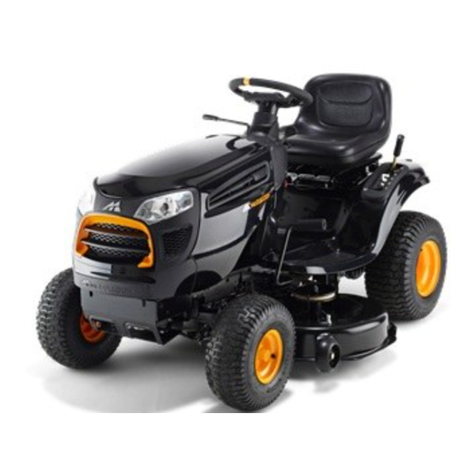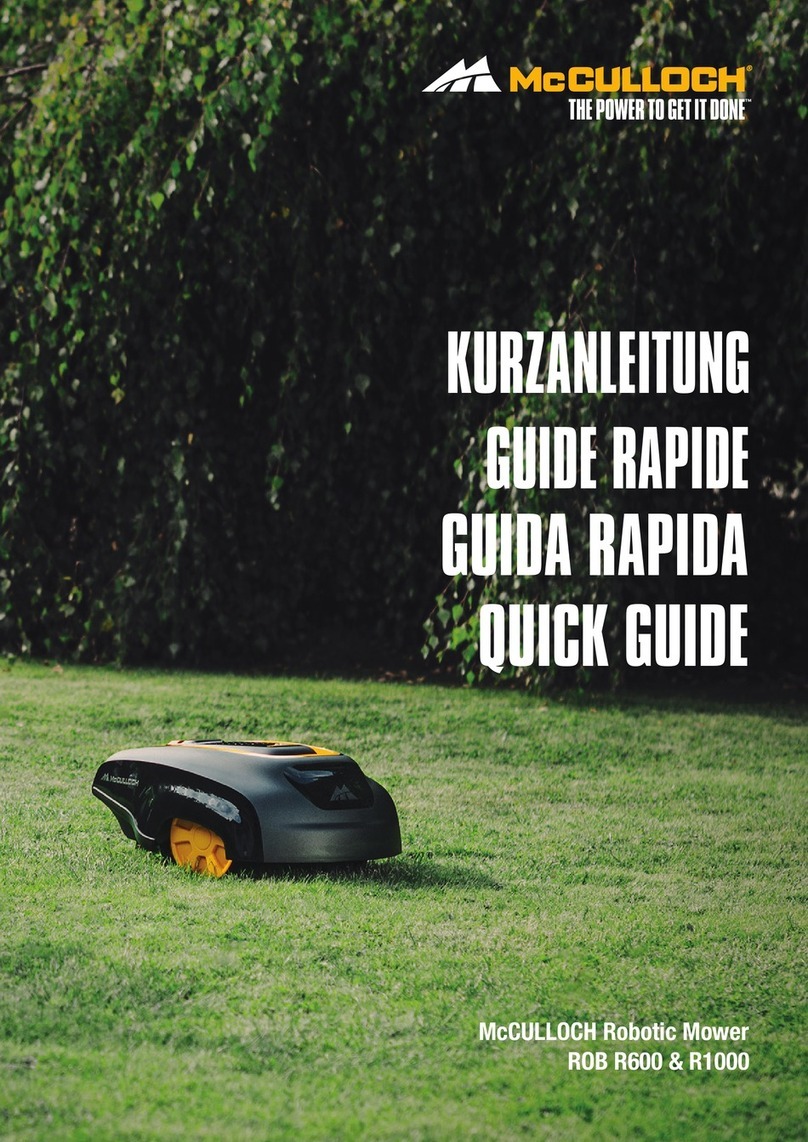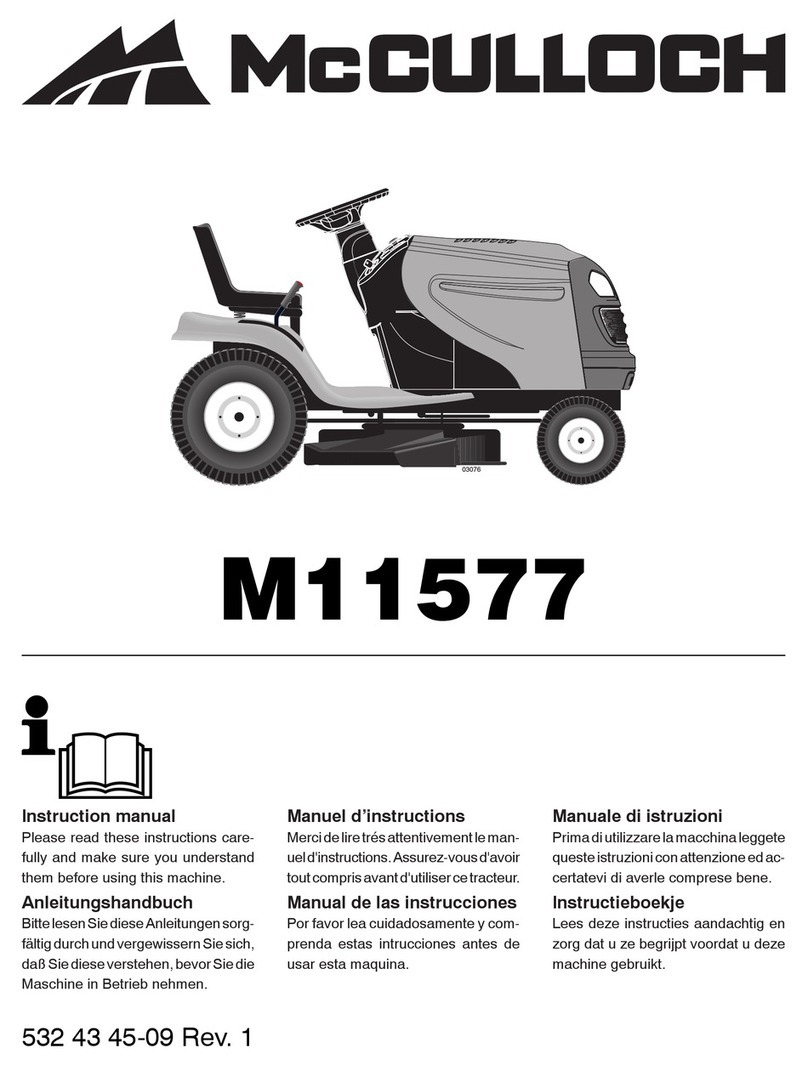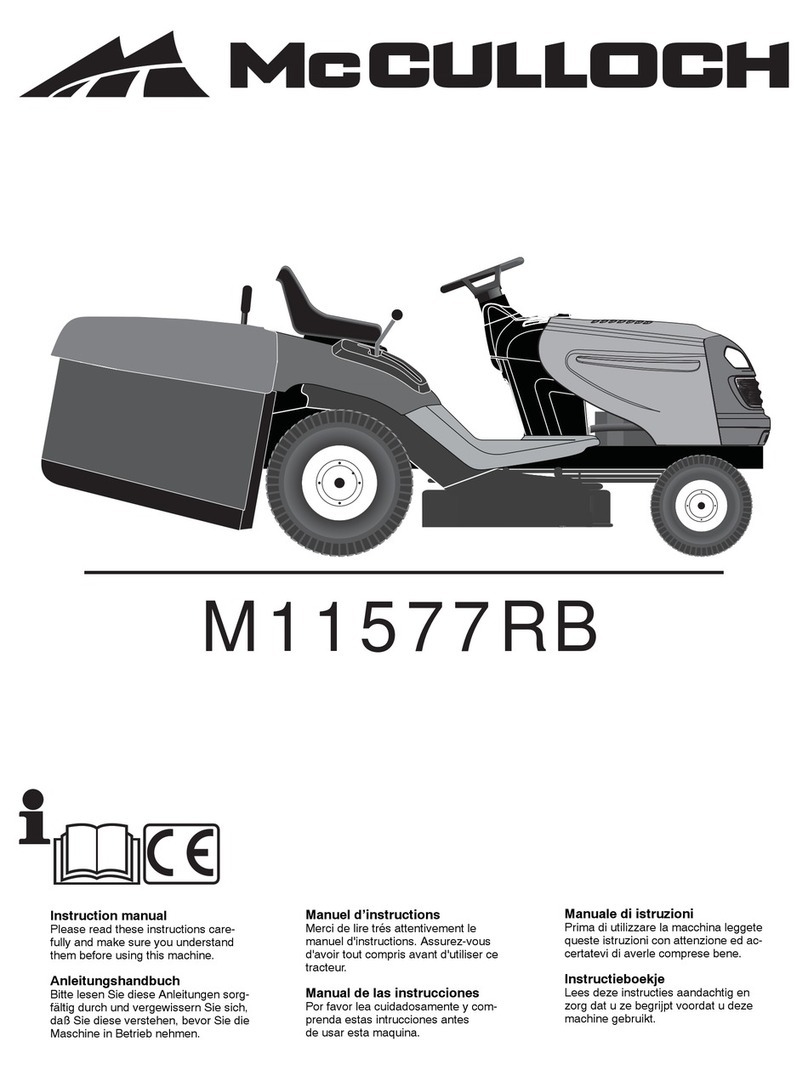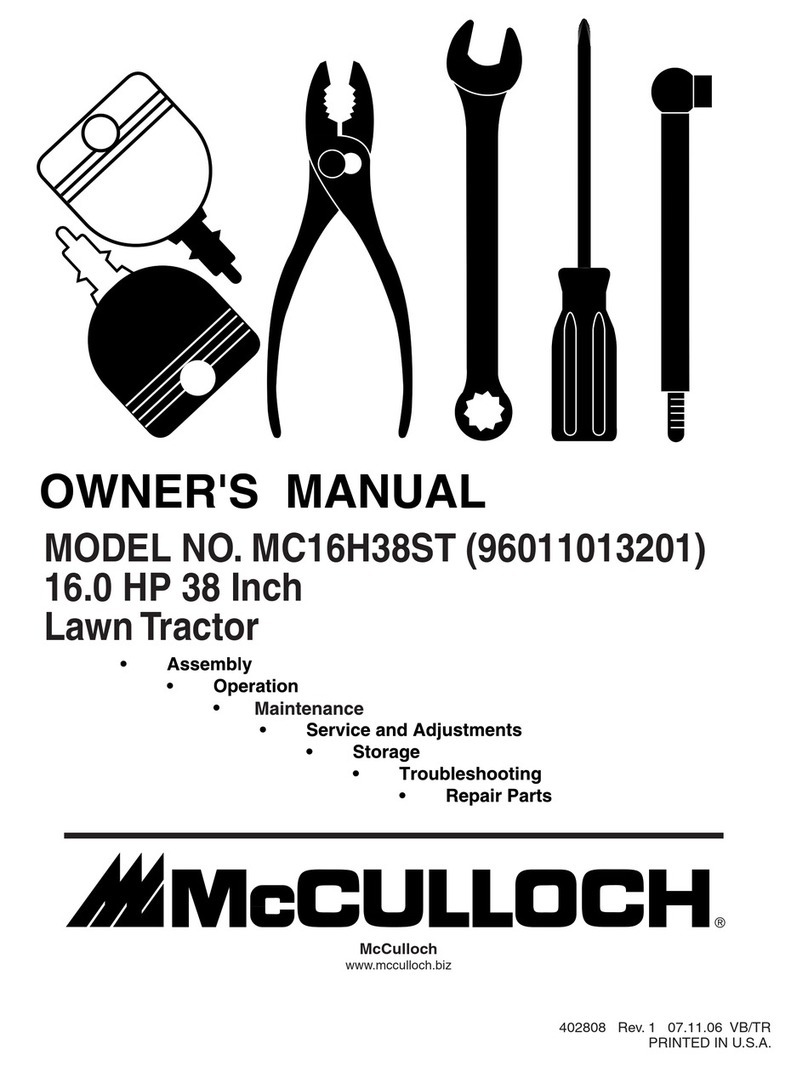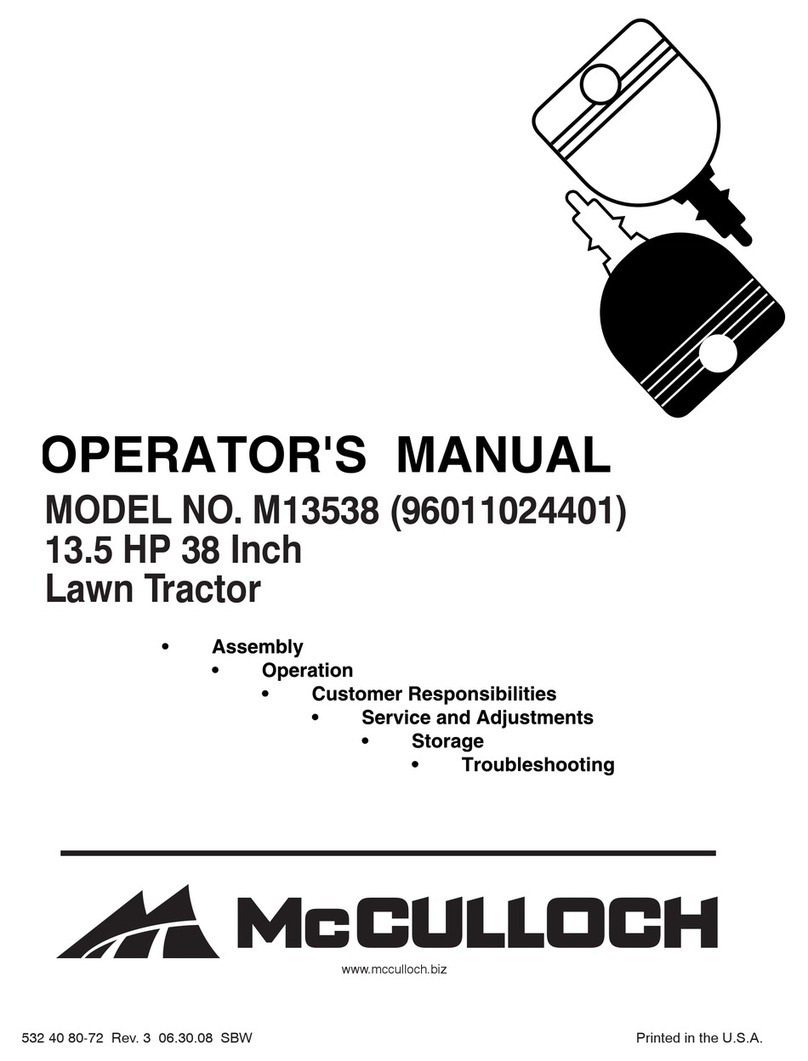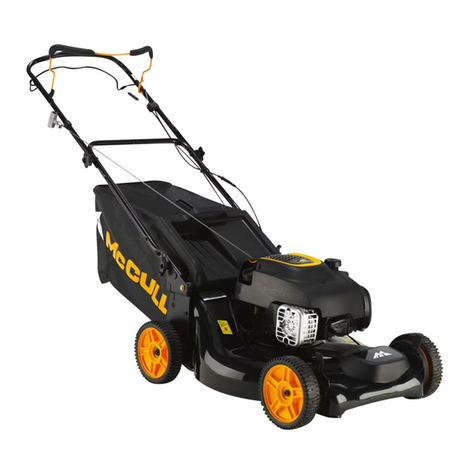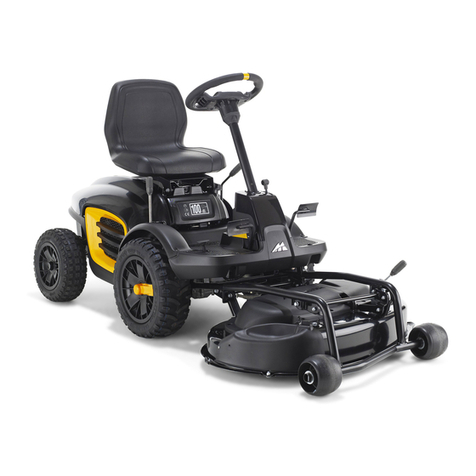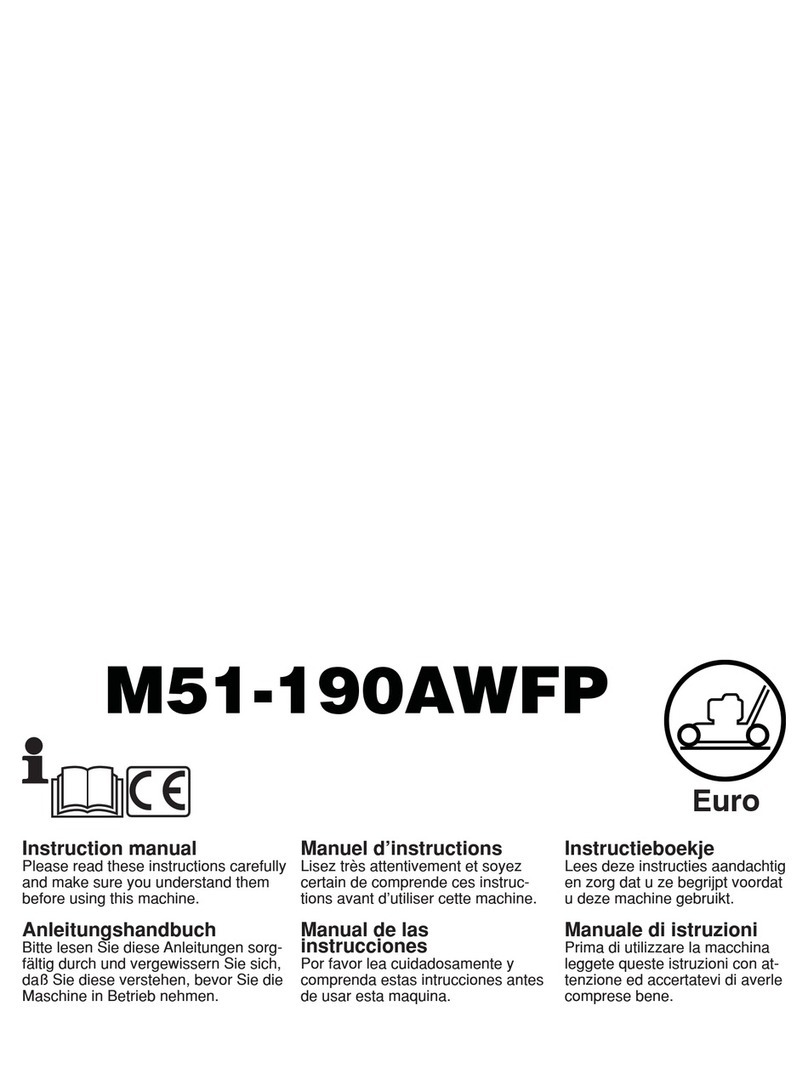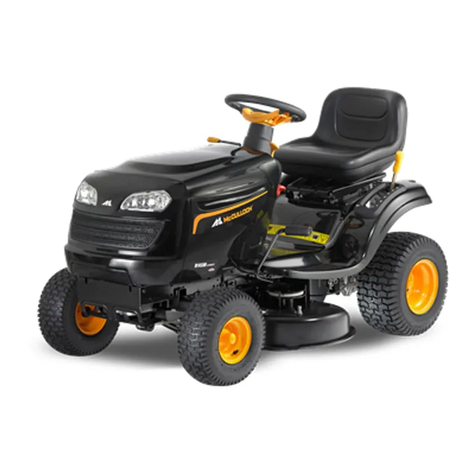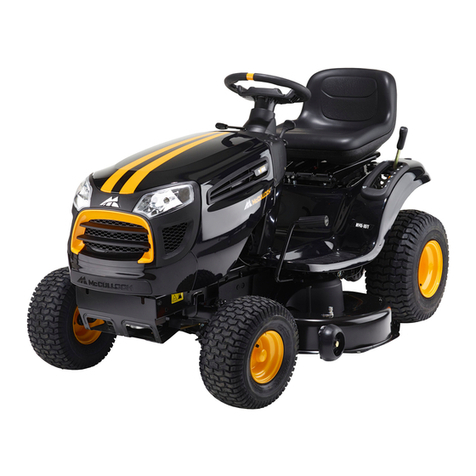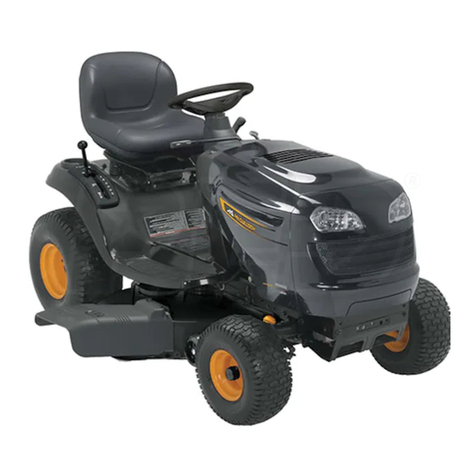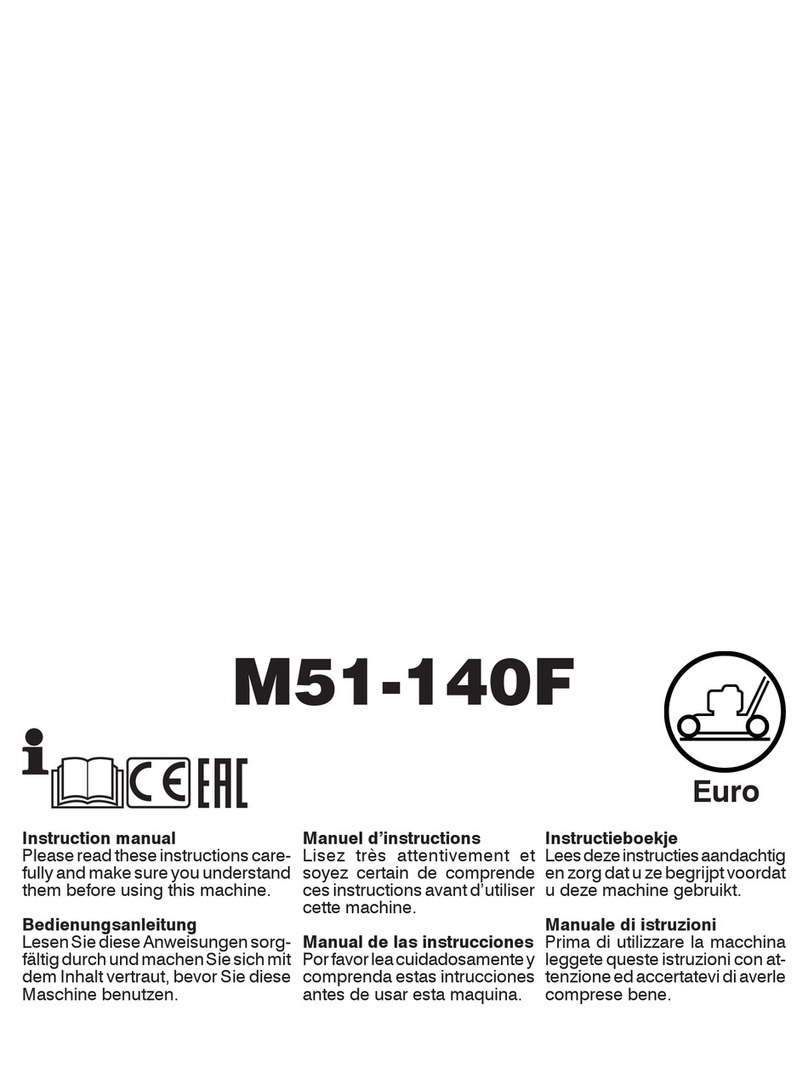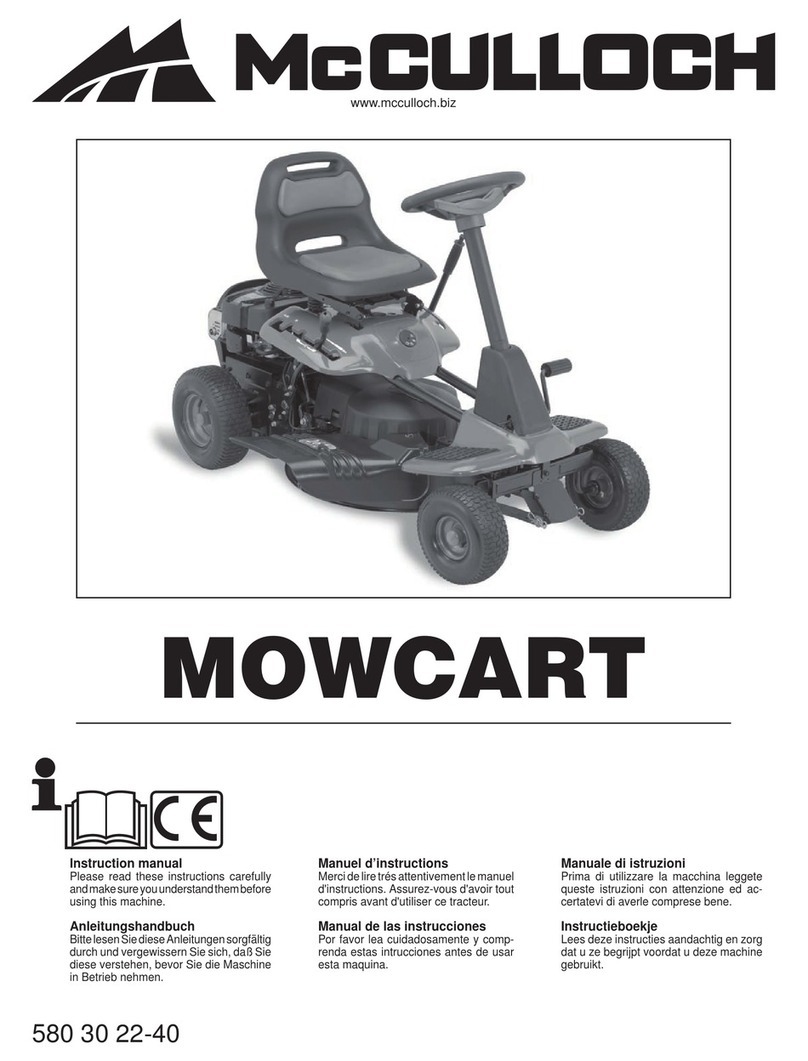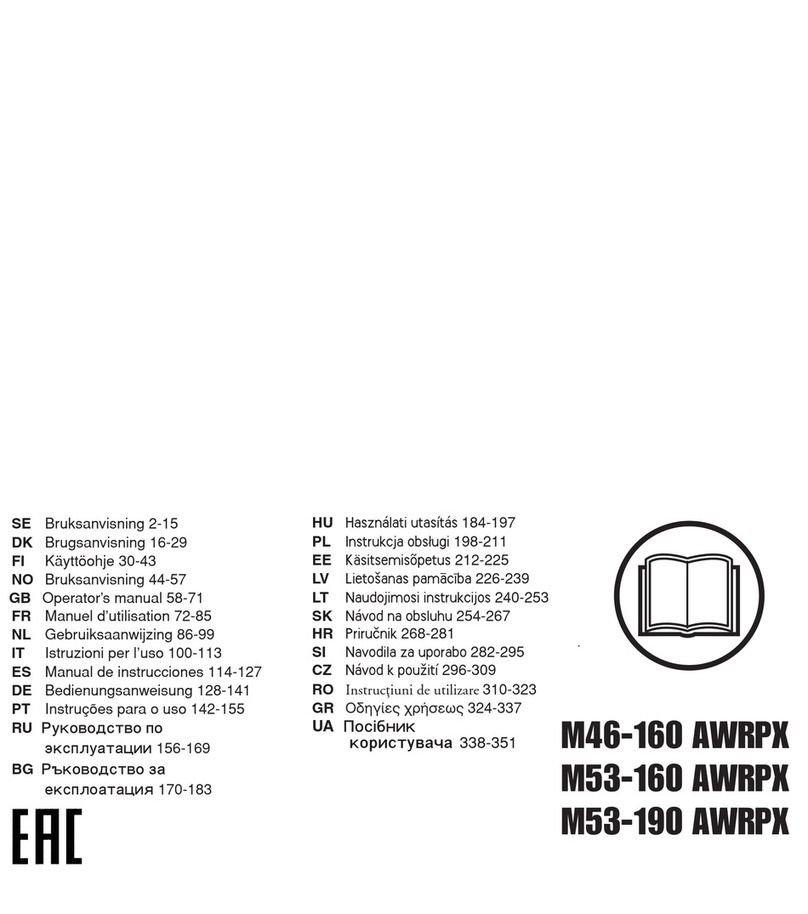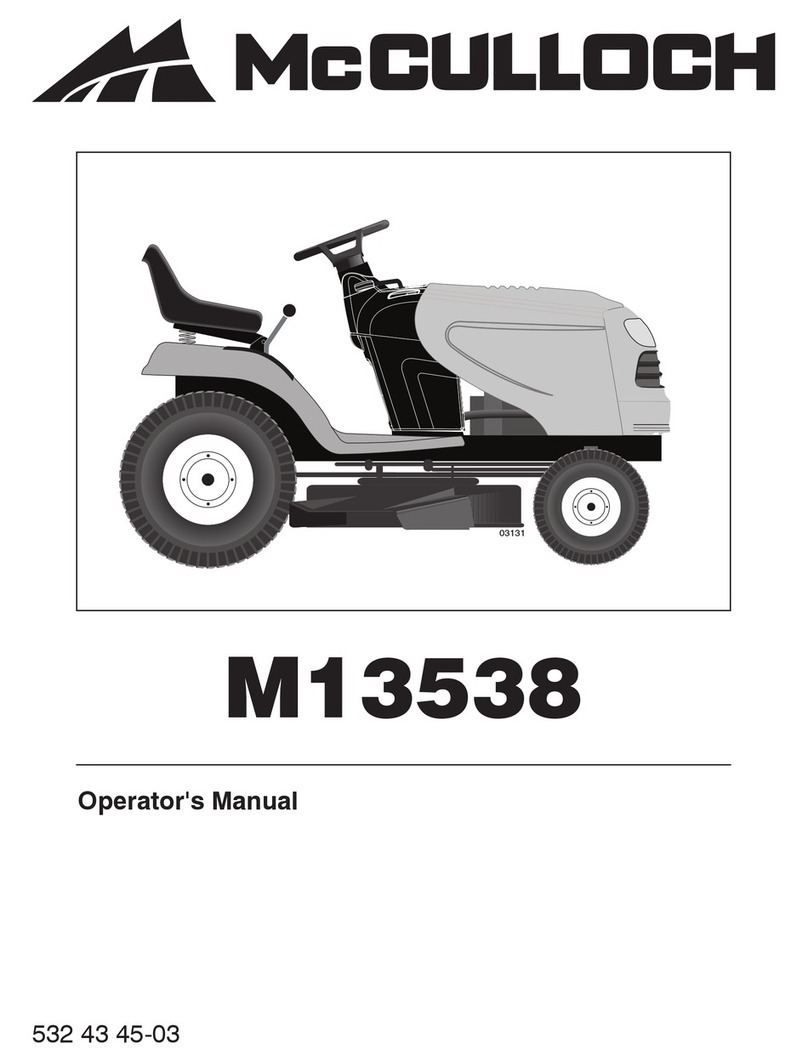10
✓CHECKLIST
Before you operate your new riding mower,
we wish to assure that you receive the best
performance and satisfaction from this Qual-
ity Product.
Please review the following checklist:
✓ All assembly instructions have been
completed.
✓ No remaining loose parts in carton.
✓ Battery is properly connected.
✓ Seat is adjusted comfortably and tight-
ened securely.
✓ All tires are properly inflated. (For ship-
ping purposes, the tires were overinflated
at the factory).
✓ Be sure mower deck is properly leveled
side-to-side/front-to-rear for best cutting
results. (Tires must be properly inflated
for leveling).
✓ Check mower belt. Be sure it is routed
properly around pulleys and inside all belt
keepers.
✓ Check wiring. See that all connections
are still secure and wires are properly
clamped.
While learning how to use your riding mower,
pay extra attention to the following important
items:
✓ Engine oil is at proper level.
✓ Fuel tank is filled with fresh, clean, regular
unleaded gasoline.
✓ Become familiar with all controls, their
location and function. Operate them
before you start the engine.
✓ Be sure brake system is in safe operating
condition.
✓ Be sure Operator Presence System and
Reverse Operation System (ROS) are
working properly (See the Operation and
Maintenance sections in this manual).
35
KEY PART
NO. NO. DESCRIPTION
KEY PART
NO. NO. DESCRIPTION
NOTE: All component dimensions given in U.S. inches
1 inch = 25.4 mm
1 532 44 20-79 WHEEL ASM (REAR)
2 532 12 17-48 WASHER, 16 GA.
3 812 00 00-01 E-CLIP
6 532 15 69-72 SPACER AXLE
7 874 78 04-28 HCS 1/4-20 X 1-3/4 GR 5 ZD
8 532 44 18-51 WELMENT SUPPORT AXLE RH
9 532 44 19-36 SUBASM FINAL DRIVE
10 817 00 05-12 SCREW 5/16 - 18 X 3/4
11 532 43 67-41 BRACKET.SUPPORT.RH
12 532 43 61-48 CASE CHAIN RH
13 532 43 72-80 BEARING BALL 6207-SRS
14 532 43 71-76 SPROCKET DRIVEN 37 TOOTH
15 532 44 25-51 TUBE INPUT HEX
16 532 43 61-53 CHAIN PRIMARY DRIVE
17 532 43 72-82 BEARING BALL 6204-3-2RS
18 532 43 61-49 CASE CHAIN LH
19 818 05 10-10 SCREW 10 - 24 X 5/8 PAN HEAD
TORX
20 532 12 49-31 WASHER THRUST .75 X 1.230
22 532 43 66-96 WELMENT SUPPORT AXLE LH
23 818 10 10-08 SCREW TORX #10 - 14 X 1/2
32 532 43 61-51 BLOCK TENSION CHAIN
33 532 43 61-50 SPRING ADJUSTER TENSION
34 877 10 10-40 PIN CLEVIS 5/16 X 2-1/2
36 532 43 57-22 SHAFT INPUT CLUTCH
37 532 43 61-52 SPROCKETSPLINED14TOOTH
39 532 43 04-70 BEARING BALL
40 532 43 69-39 ARM BRAKE
41 532 10 95-53 SWITCH INTLK CL MWR GRY
4 TERM
43 873 80 05-00 NUT LOCK HEX W/INSERT
5/16 - 18 UNC
44 532 43 66-52 COVER END HEX
45 532 43 61-54 SPRING DRIVE
47 532 43 69-49 BRACKET MOUNT CABLE
LRV B
48 817 54 10-16 SCREW.HEX.HEAD WASH.10-
24X1.00
51 532 43 67-39 BRACKET SUPPORT LH
53 873 90 06-00 LOCK NUT, FLANGED
54 532 43 57-26 BEARING BALL
55 532 43 77-77 COVER WHEEL CLUTCH
57 532 43 65-59 WHEEL FRICTION
59 532 44 10-97 PLATE.CLUTCH.DRIVE
60 532 43 77-87 PLATE PRESSURE DRIVE
62 532 43 77-86 PLATE CLUTCH BRAKE
63 532 43 77-85 PLATE PRESSURE BRAKE
65 532 43 57-23 PLATE PRESSURE MASTER
66 532 43 57-24 BEARING THRUST 20MM
67 532 43 57-25 PLATE THROWOUT
68 532 43 57-28 BEARING BALL LOOSE
69 532 43 57-27 COVER CLUTCH
70 532 41 15-55 GRIP LEVER
71 532 43 68-65 TUBE SHIFT LRV
72 872 11 04-06 BOLT CARR.
73 873 68 04-00 NUTCROWNLOCK1/4- 20UNC
75 532 43 67-00 BRACKET MOUNT SHIFT
76 532 18 35-00 HUB SHIFT
78 532 42 90-55 SPACER NYLON .866 X 1.25 X
.250
79 874 78 04-12 BOLT.FIN.HEX.1/4-20 UNC X .75
80 810 04 04-00 WASHER LOCK HVY HLCL
SPRING
81 819 09 12-10 WASHER 9/32 X 3/4 X 10 GA.
84 819 11 16-10 WASHER 11/32 X 1.00 X 10 GA.
85 532 43 69-14 SPRING FRICTION PACK
86 532 43 73-04 BUSHING PACK FRICTION FD2
87 532 43 69-48 WASHER PLASTIC
88 532 43 67-01 STUD PACK FRICTION
89 532 43 72-99 SPACER PACK FRICTION FD2
90 819 11 14-16 WASHER.11/32 X 7/8 X 16 GA.
91 532 43 69-24 SUBASM.LINK.SHIFT
94 532 43 69-18 WELDMENT.SHIFT.FD2
95 532 43 68-66 PLATE.SHIFT
96 532 43 77-67 DRUM CLUTCH MULTI DISC
97 532 43 69-25 SUBASM LINK SHIFT PRIMARY
98 532 15 03-60 NUT LOCK CENTER 1/4 - 28
FNTHD
101 817 06 06-24 SCREW.3/8-16X1-1/2. SMGML.
TAP/R
102 532 08 67-77 THREAD.CUTTER
103 532 10 44-45 SWITCH.SEAT.
104 532 43 77-81 HUB CENTER
105 532 43 61-42 SPRING WAVE C125-H5
106 532 19 43-21 SPACER RETAINER
107 532 12 47-88 RETAINER.SPRING.1”.ZINC/
CAD
108 532 43 67-84 BUSHING.5/16IDX7/16ODX1/2
109 532 19 32-68 CAP.HUB.AXLE.1.50 X 1.00
110 532 42 84-61 BRACKET SHIFTER FLEX
111 532 12 35-83 KEY.SQUARE.2.0 X .1845/.1865
112 818 10 10-12 SCREW TORX #10-14 X .750
113 873 90 05-00 NUT LOCK FLANGE HEX
114 532 43 62-82 BEARING FLANGE
RIDING MOWER MODEL NUMBER MC30 (96022001300)
DRIVE PRODUCT NUMBER 960 22 00-13
